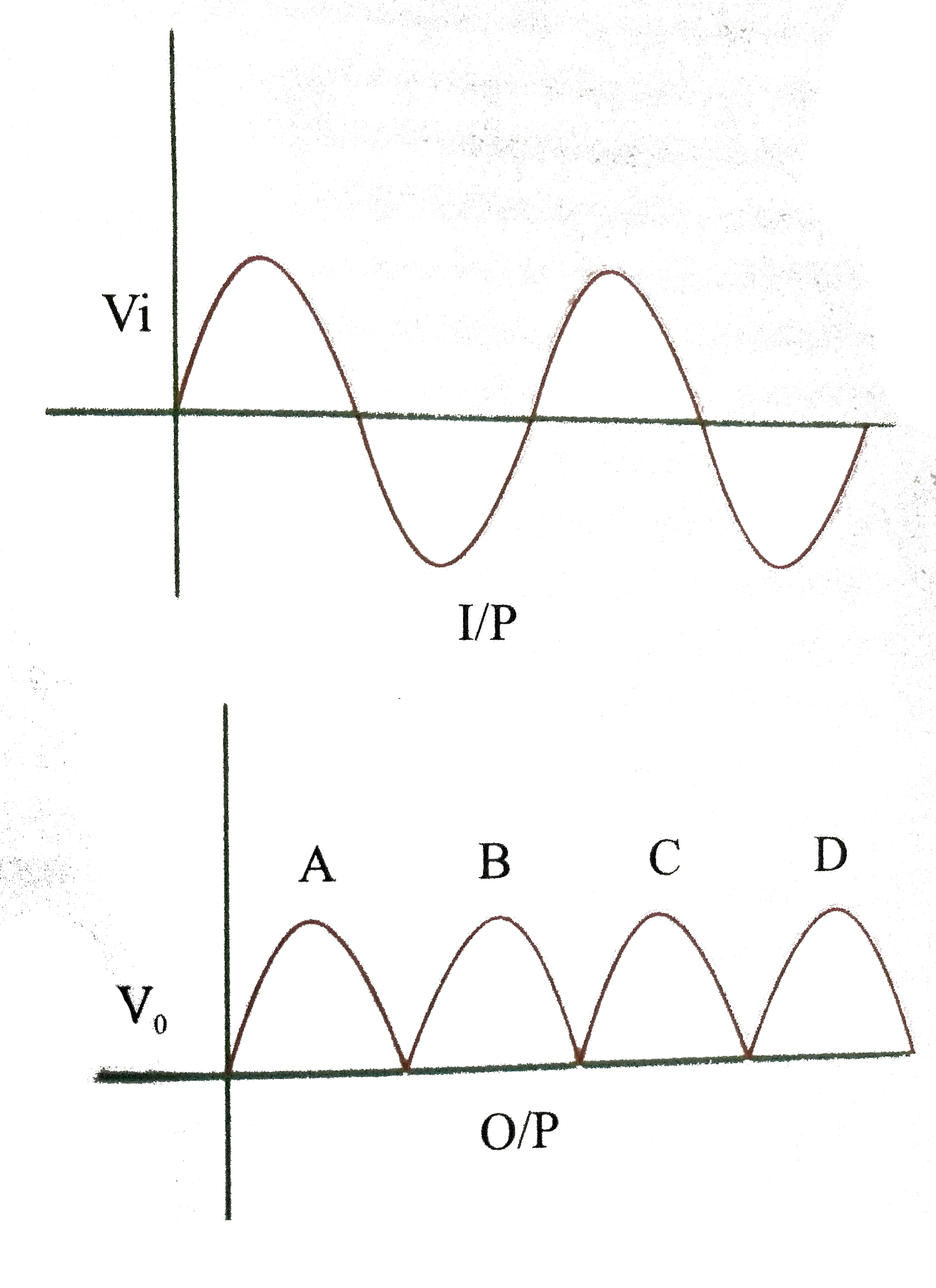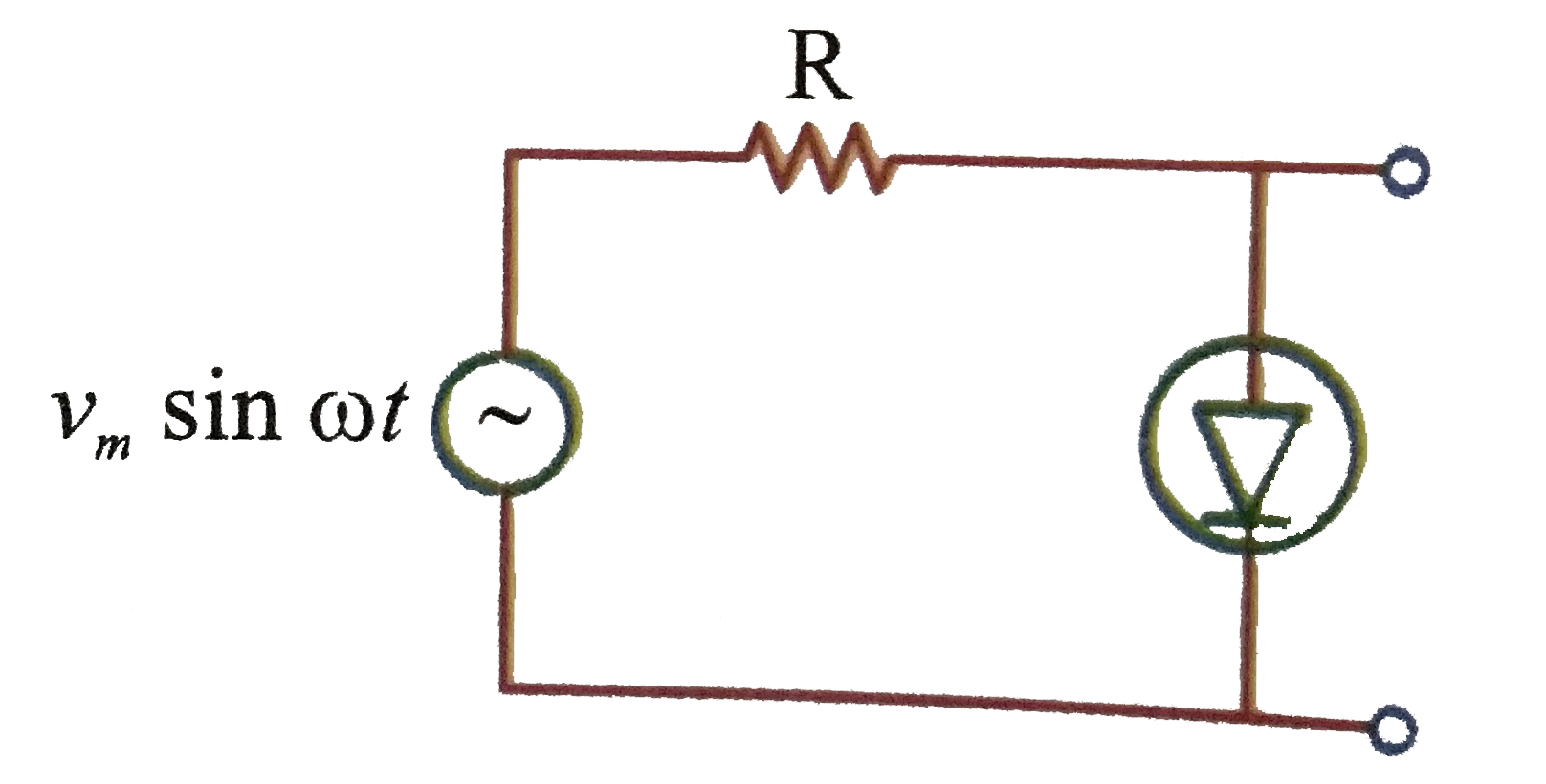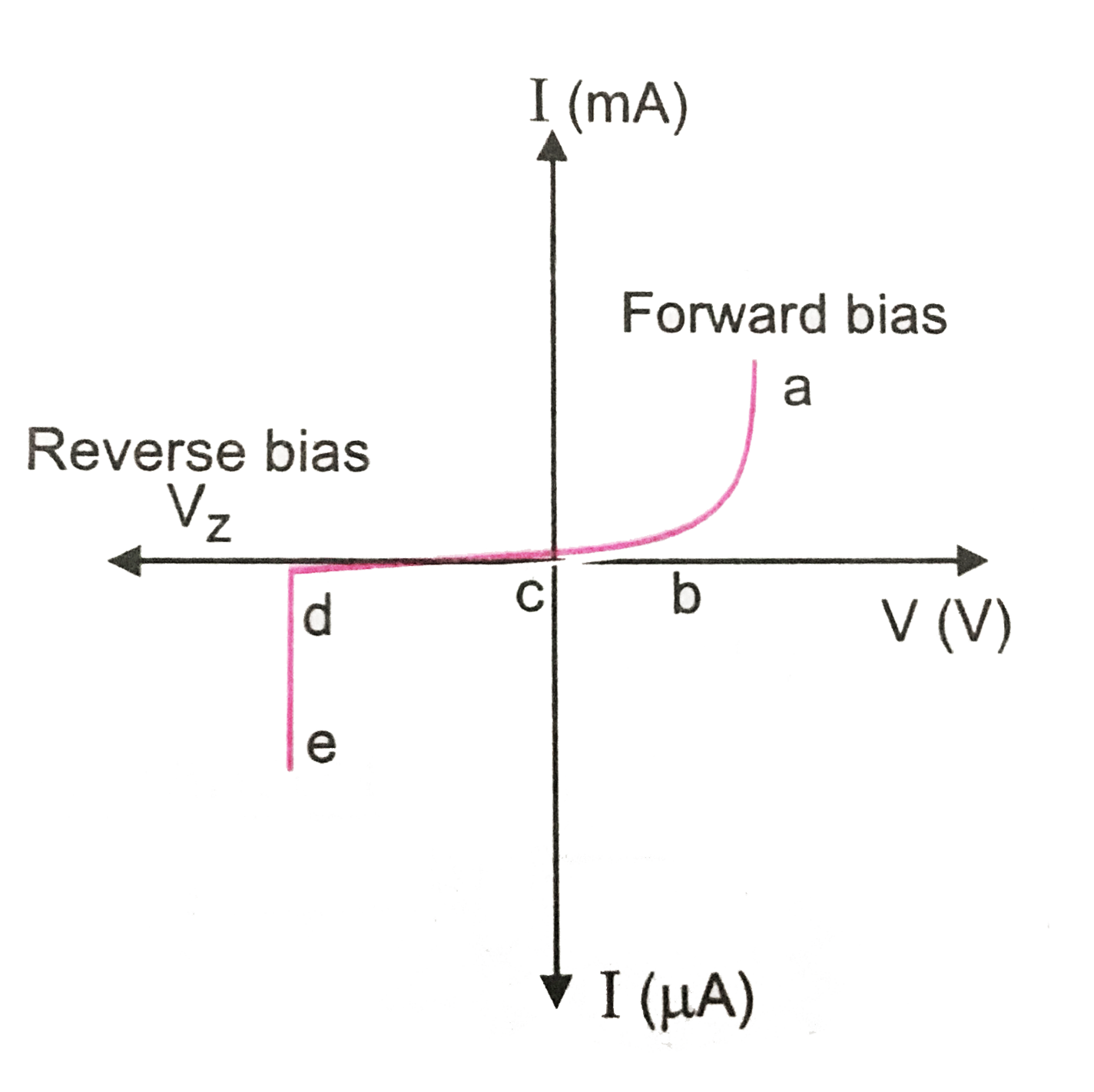Complete Solutions to C.U.Q of chapter SEMI CONDUCTOR DEVICES of Class 12 book with complete answers and questions
| Class 12 | PHYSICS |
| Chapter | SEMI CONDUCTOR DEVICES |
| NARAYANA | C.U.Q |
| Number Of Questions | 100 |
| Academic Year | 2023-24 |
Which property makes the crystalline solids to have sharp melting point ?
02:27View SolutionWhich of the following is not a property of crystalline substance
02:47View SolutionA piece of copper and another of germanium are cooled from room temperature to `80 K`. The resistance of
01:52View SolutionThe difference in the variation of resistance with temperature in a metal and a semiconductor arises essentially due to the difference in the
01:40View SolutionThe manifestation of band structure in solids is due to
05:41View SolutionA solid which is not transperent to visible light and whose conductivily increase with temperature is formed by
01:35View SolutionTo a germanium sample, traces of gallium are added as an impurity. The resultant sample would behave like
01:28View SolutionIn semiconductors at a room temperature
02:00View SolutionIdentify the property which is not characteristic for a semiconductor ?
03:00View SolutionCarbon , silicon and germanium have four valence electrons each . At room temperature which one of the following statements is most appropriate ?
02:14View SolutionThe relation between number of free electrons `(n)` in a semiconductor and temperature `(T)` is given by
00:53View SolutionAn electrically neutral semiconductor has
02:12View SolutionThere is no hole current in conductors because they have
01:33View SolutionIn the insulators
02:27View SolutionIn semiconductors the for bidden energy gap between `V.B` and `C.B` is of the order of
02:31View SolutionThe level formed due to impurity atom, in the for hidden energy gap, very near to the valence band in a p-type semiconductor is called
02:40View SolutionThe bond in semiconductors is
02:14View SolutionOn increasing temperature, the conductivity of pure semiconductors
02:37View SolutionThe mobility of free electrons is greater then that of free holes because
02:56View SolutionA semiconductor at `0 K` behaves as
02:09View SolutionCarbon , silicon and germanium have four valence elcectrons each . These are characterised by valence and conduction bands separated by energy band - gap respectively equal to ` (E_g)_(c) (E_g)_(si) ` and ` (E_g)_(Ge) `. Which of the following statements ture ?
02:04View SolutionThe valency of impurity element for making p-type semiconductors is
02:28View SolutionIn n-type semiconductors the electron concentration is equal to
03:50View SolutionWhich of the following statements is not true ?
03:06View Solutionp-type semiconductor is
02:13View Solutionn-type semiconductor is
02:38View SolutionAn electric field is applied across a semiconductor. Let `n` be the number of charge carries. As temperature increases, `n` will
01:25View SolutionIn a n-type semiconductor, the femi energy level lies
03:09View SolutionAn n-type and p-type silicon can be obtained by doping pure silicon with.
03:21View SolutionThe width of forbidden gap in silicon crystal is `1.2 ev`. When the crystal is converted into a n-type semiconductor the distance of fermi level from conduction band is Greater than `0.55 eV`
03:29View SolutionIn extrinsic semiconductors
01:46View SolutionThe element that can be used as acceptor impurity to dope silicon is
01:26View SolutionAmong the following, the wrong statement on the case of semiconductor is
02:29View SolutionThe value indicated by fermi energy level in an intrinsic semiconductor is
02:17View SolutionThe conduction band and valency band of a good conductors are
02:36View SolutionTwo pieces one of germinium and the other of aluminium are cooled from `T_(1) K` to `T_(2) K`. The resistance of
02:51View SolutionIn intrinsic semiconductor at room temperature the no. of electrons and holes are
01:10View SolutionBand gap in insulator is of the order
02:09View SolutionIn p-type semiconductor conduction in due to
01:47View SolutionIn an intrinsic semiconductor, the fermi energy level is
02:53View SolutionWith increase in temperature in an intrinsic semiconductor the ration of conduction electrons and holes is
02:08View SolutionTo obtain n-type extrinsic semiconductor, the impurity element to be added to germanium should be of valency
02:43View SolutionThe majority carries in a p-type semiconductor are….
01:55View SolutionThe objective of adding impurities in the extrinsic semiconductor is
04:43View SolutionIn intrinsic semiconductor conductivity is
01:38View SolutionIn intrinsic semiconductor conductivity is due to.
02:00View SolutionWhen the conductivity of a semiconductor is only due to breaking of covalent bonds, the semi conductor is called.
02:24View SolutionAssertion (A) : `C,Si` and `Ge` have `4` Valancy each both but `C` is an insulator where as `Si` and `Ge` are semi conductors
Reason `( R)` : Energy gap is least for `Ge`, less for `Si` compared to `C`, So that free electrons for conduction in `Ge` and `Si` are significant but negligible small for `C`.03:38View SolutionThe potential barrier at `PN` junction is due to
02:28View SolutionA `PN` junction diode cannot be used
03:11View SolutionA full wave rectifier with the output is shown in fig. the contributions from the diode (2) are.
 .
.
 03:58View Solution
03:58View SolutionA full-wave rectifier is used to convert 'n' `HZ a.c` into `d.c`, then the number of pulses per second present in the rectified voltage is.
02:00View SolutionIf the input frequency of half-wave rectifier is `n Hz ac`, then its output is
02:55View Solution`p-n` junction diode acts as
02:18View SolutionThe process of converting alternating current into direct current is known as
01:25View SolutionOn increasing reverse voltage in a `p-n` junction diode the value of reverse current will
02:58View SolutionIn forward bias the depletion layer behaves like
02:58View Solution`p-n` junction in reverse bias behaves like
02:48View SolutionThe main cause of avalence breakdown is
01:43View SolutionThe main cause of Zener breakdown is.
01:20View SolutionWhen `p-n` junction is forward biased, the current across the junction is mainly due to
02:57View SolutionThe current through any `p-n` junction is due to
(a) drift of charge carriers
(b) diffusion of charge carriers
( c) different concentrations of same type of charge carriers in different regions.
(d) Same concentrations of same type of charge carriers in different regions02:39View SolutionThe thickness of depletion layer is approximately
02:46View SolutionThe depletion region is
02:47View SolutionDiffusion current in a p-n junction is greater than the drift current in magnitude
05:45View SolutionGermanium diode.
02:18View SolutionThe output of the given circuit in Fig.
 .02:23View Solution
.02:23View SolutionDiode is forward biased and the applied voltage is greater than the potential barrier then
(I) resistance of the junction in the forward bias decreases
(II) potential barrier remains same
(III) width barrier remains decreases
(IV) p-type is at higher potential than the n-type.03:06View SolutionWhen a junction diode is reverse biased, then current called drift current is due to
02:53View SolutionAmong the following one statement is not correct when a junction diode is forward bias
02:21View SolutionConsidering `a.p-n` junction as a capacitor, forward with `p` and `n` material acting as thin metal electrodes and depletion layer width acting as seperation between them. Basing on this assume that a `n-p-n` transistor is working as an amplifier in `CE` configuration. If `C_(1)` and `C_(2)` are base-emiter and collector emitter junction capacitances, then :
04:00View SolutionConsider the following statements `A` and `B` and identify the correct answer
(1) : Germanium is preferred over silicon in the construction of zener diode.
(2) : Germanium has high thermal stability than silicon in the construction of Zener diode.02:07View SolutionA Zener diode when used as a voltage regulator is connected
(a) in forward bias
(b) in reverse bias
( c) in parallel to the load
(d) in series to the load.01:43View SolutionConsider the following statements `A` and `B` and identify the correct answer
(A) A Zener diode is always connected in reverse bias to use it as voltage regulator.
(B) The potential barrier of a `p-n` junction lies between `0.1` to `0.3 V`, approximately.03:38View SolutionConsider the following statement `A` and `B` and identify the correct choice of the given answers
`A:` The width of the depletion layer in a `P-N` junction diode increases in forwards biase
`B:` In an intrinsic semiconductor the fermi energy level is exactely in the middle of the forbidden gap02:48View SolutionThe potential in the depletion layer due to.
02:27View SolutionPickout the incorrect statement regarding reverse saturation current in the `p-n` junction diode.
03:00View SolutionWhen the `p-n` junction diode is reverse biased, the thickness of the depletion layer
03:27View Solution`p-n` junction diode can be used as
02:34View SolutionA `p-n` junction diode is reverse biased. Then
01:49View SolutionIn the middle of the depletion layer of a reverse - biased `p - n ` junction , the
04:48View SolutionWhen `p-n` junction diode is forward biased then
02:59View SolutionIn a `p-n` junction photo cell, the value of the photo electromotive force produced by monochromatic light is proportional to
01:41View SolutionThere is a sudden increase in current in zener diode is
02:53View SolutionApplication of a forward biase to a `p-n` junction:
04:09View SolutionIn a p- n junction diode not connected to any circuit,
03:07View SolutionSelect the correct statement from the following :
03:41View SolutionWhen a `PN` juction diode is forwards biased, energy is released at the juction due to the recombination of electrons and holes. This energy is in
01:42View SolutionA `Si` and a `Ge` diode has identical physical dimensions. The band gap in `Si` is larger than that in `Ge`. An indentical reverse bias is applied across the diodes.
01:39View SolutionThe graph shown in Fig. represents the I-V characteristics of a zener diode. Which part of the characteristics curve is most relevent for its operation as a voltage regular?
 05:21View Solution
05:21View SolutionAssertion (A) : `Si` and `GaAs` are preferred materials for solar cells
Reason (R ) : Energy gap of `Si` is `1.1 eV` and that of `GaAs` is `1.53 eV` which gives maximum irradiance where as other materials like `CdS` or `CdSe (E_(g) = 2.4 eV)` and `PbS (E_(g) = 0.4 eV)` given minimum irradiance.04:35View SolutionAssertion (A) : Putting p-type semiconductor slabs directly in physical contact can not form `p-n` junction
Reason ( R) : The roughness at contact will be much more than inter atomic crystal spacing `(= 2 Å to 3 Å)` and continuous flow of charge carriers is not possible.02:25View SolutionAssertion (A) : Eventhough forward bias is known to be more `(mA)` than the current in the reverse bias `(mu A)`, photodiodes are still used in reverse bias.
Reason ( R) : The fractional change in majority charge carriers woulb be much less than that in minority charge carriers due to photo-effects so that minority carrier reverse bias current is more easily to measure with photo diodes than majority carrier forward current.View SolutionThe correct relation between current gains `alpha` and `beta` is
01:41View SolutionTransistors are made of.
01:28View SolutionIn `n-p-n` transistor the arrow head on emitter represents that the convantional current flows from
01:53View SolutionIn a junction transistor the emitter, base and collector are made of.
01:59View SolutionIn a transistor.
02:28View SolutionIn a transistor
01:45View SolutionIn transistor the emitter current is.
02:02View Solution
C.U.Q questions and complete solutions for chapter SEMI CONDUCTOR DEVICES of NARAYANA PHYSICS (HINGLISH) of Class 12
